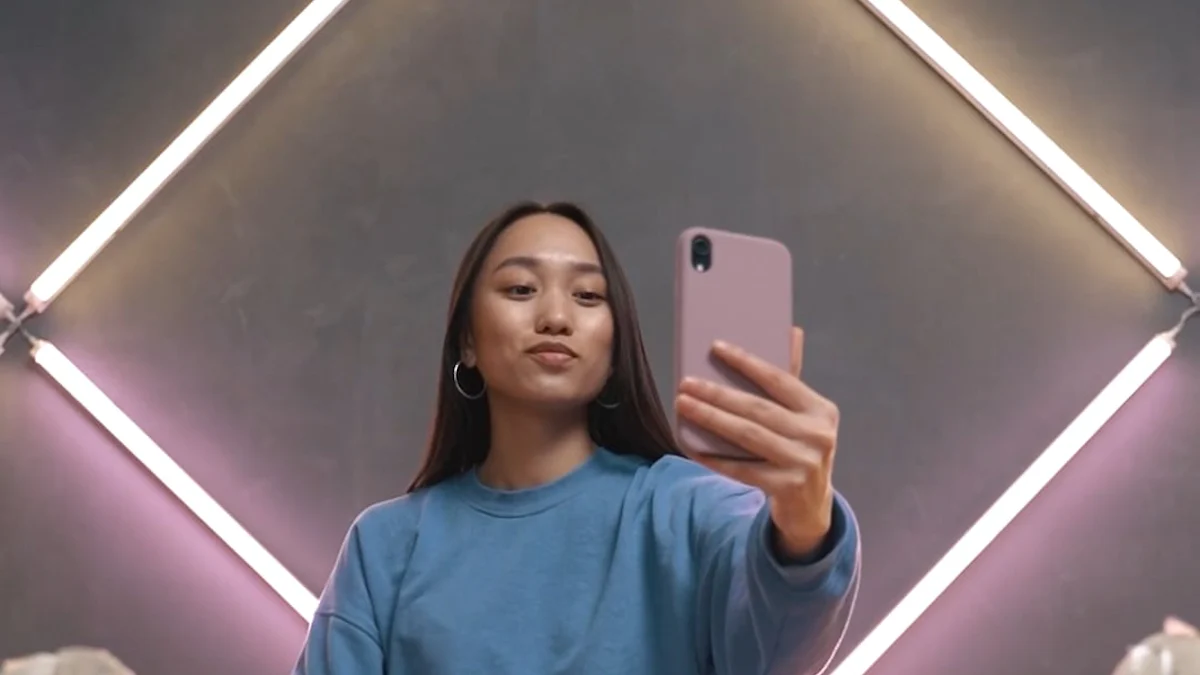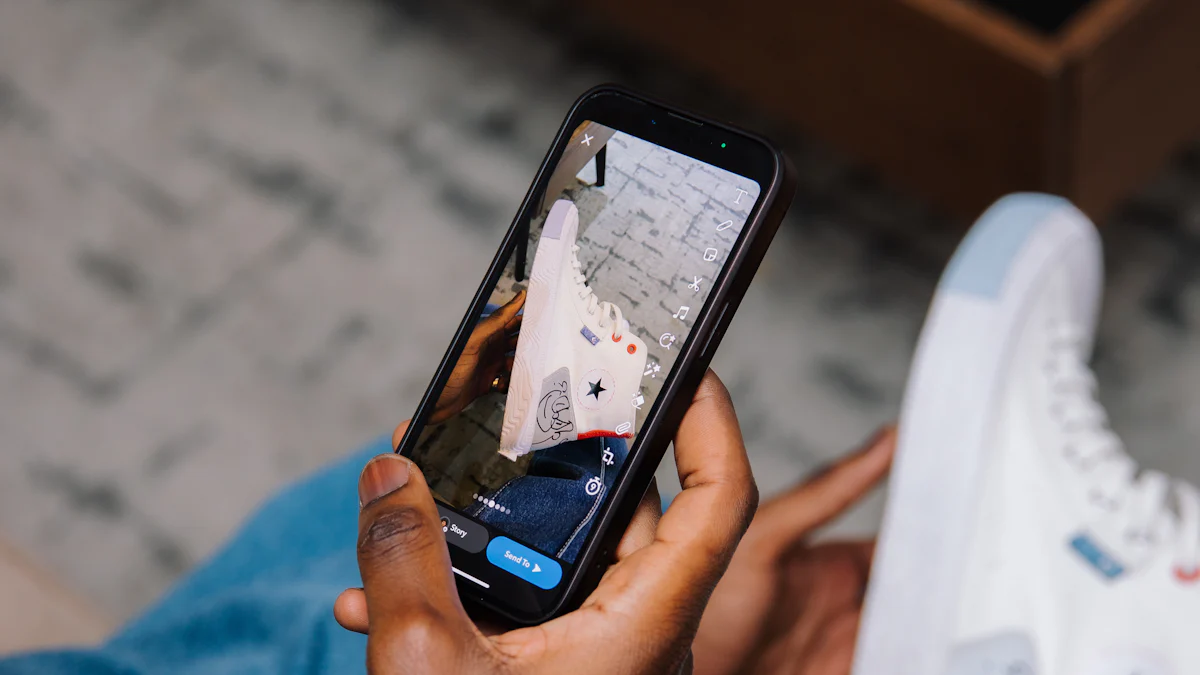The Impact of AI on Smartphone Cameras
37 min read AI in smartphone cameras refers to the use of advanced algorithms and technologies to improve photography. It allows your camera to analyze scenes, recognize objects, and adjust settings automatically.written by Alex Carter, Content Creator April 16, 2024 06:00
Image Source: pexels
Artificial intelligence has revolutionized how you capture moments with your smartphone. It transforms ordinary cameras into powerful tools that adapt to your environment and enhance your photos. For example:
- AI in Google’s Pixel phones analyzes scenes and adjusts settings for optimal results.
- Samsung Galaxy S22 Ultra uses AI to improve low-light images by reducing noise and enhancing details.
- Huawei P40 Pro+ employs AI to deliver stunning 10x hybrid optical zoom.
- Apple’s iPhone leverages AI for Smart HDR, combining multiple frames to create vibrant, detailed images.
These advancements make photography effortless. AI-powered cameras analyze scenes in real-time, optimize settings, and guide you to compose better shots. This technology removes technical barriers, allowing you to focus on creativity. The impact of AI on smartphone cameras has reshaped how you capture and share memories, making photography more accessible and enjoyable.
Key Takeaways
- AI helps smartphone cameras by changing settings for each scene. This makes taking pictures easier for everyone.
- It improves photo quality in real-time, so pictures look clear and balanced without extra work.
- AI makes low-light photos better by reducing blur and sharpening details. This helps you take great night pictures easily.
- Voice and hand controls make taking pictures simple and hands-free.
- AI editing tools quickly improve photos, making them look professional with little effort.
Understanding the Impact of AI on Smartphone Cameras
What is AI in Smartphone Cameras?
AI in smartphone cameras refers to the use of advanced algorithms and technologies to improve photography. It allows your camera to analyze scenes, recognize objects, and adjust settings automatically. For example, AI can detect whether you are capturing a landscape, a portrait, or a night scene. It then optimizes the camera settings to deliver the best possible image. This technology makes your smartphone camera smarter and more intuitive, helping you take professional-quality photos effortlessly.
How AI Enhances Smartphone Photography
Key Technologies Driving AI-powered Cameras
Machine Learning and Image Processing
Machine learning enables your smartphone camera to learn from data and improve over time. It powers features like scene recognition, where the camera identifies the type of scene and adjusts settings accordingly. For instance, Google’s Pixel phones use this technology to optimize photos based on the environment. Machine learning also enhances low-light photography by processing multiple frames to reduce noise and improve clarity.
Neural Networks in Photography
Neural networks mimic the structure of the human brain to process visual data. They play a crucial role in tasks like face detection, object tracking, and background blur. Deep learning, a subset of neural networks, helps your camera perform complex tasks like recognizing intricate details in a scene. This technology ensures that your photos are sharp, vibrant, and well-composed.
Computational Photography Features
Computational photography combines hardware and software to create stunning images. It uses AI to adjust settings like exposure and focus in real-time. Features like Smart HDR on iPhones merge multiple frames to produce detailed and vibrant photos. Night modes on devices like the Samsung Galaxy S22 Ultra use computational photography to capture bright and clear images in low-light conditions. These innovations highlight the significant impact of AI on modern smartphone cameras.
Key Features and Benefits of AI-powered Cameras

Image Source: pexels
Scene Detection and Optimization
Automatic Scene Recognition
AI-powered cameras can identify the type of scene you are capturing, whether it’s a landscape, portrait, or night shot. This feature ensures your photos always look their best. For example, the camera analyzes elements like lighting, colors, and objects in real-time. It then adjusts settings such as exposure and white balance to match the scene. This automation saves you time and effort, allowing you to focus on framing the perfect shot.
Some benefits include:
- Improved image quality with vibrant colors and reduced noise.
- Intelligent autofocus for sharper action shots.
- Smart HDR for well-balanced photos, even in challenging lighting.
Real-time Adjustments for Better Results
AI continuously analyzes the scene as you shoot. It optimizes settings like aperture, ISO, and shutter speed instantly. This ensures your photos are well-exposed and balanced without manual adjustments. For example, AI can detect faces and track movement to maintain focus. It even captures ideal moments by recognizing smiles or blinks. These real-time adjustments make photography effortless and enjoyable.
Enhanced Low-light and Night Photography
Noise Reduction and Clarity
Low-light photography often struggles with grainy images. AI solves this by analyzing pixel patterns to differentiate noise from actual details. It smooths noisy areas while preserving important features. Advanced algorithms also enhance clarity, making your night shots look crisp and detailed. For instance, AI-powered stabilization reduces blur caused by shaky hands, ensuring sharp results.
Night Mode Innovations
Night modes in AI cameras take low-light photography to the next level. They combine multiple exposures to brighten dark scenes while maintaining natural colors. AI adjusts settings like shutter speed and ISO to capture more light. This creates stunning night photos with minimal effort. Features like these highlight the transformative impact of AI on smartphone photography.
AI-driven Image Editing and Filters
Real-time Filters and Effects
AI simplifies editing by offering real-time filters and effects. These tools enhance your photos instantly, allowing you to focus on creativity. For example, AI can apply artistic effects or adjust colors to match your preferences. It even suggests edits like cropping to improve composition. This makes it easy for you to create professional-looking images with minimal effort.
Portrait Modes and Background Blur
AI-driven portrait modes create stunning depth-of-field effects. They separate the subject from the background, mimicking the look of high-end cameras. Recent advancements include precise edge detection and adjustable blur intensity. These features work even in low light, ensuring your portraits always stand out. AI enhances your creative possibilities, making every photo unique and memorable.
Accessibility and User Experience
Simplifying Photography for Beginners
AI-powered cameras make photography easier for everyone, especially beginners. You no longer need to understand complex settings or adjustments to capture stunning images. AI automates these processes, allowing you to focus on the moment rather than the technical details.
- AI algorithms handle tasks like adjusting brightness, contrast, and focus. This ensures your photos look polished without requiring manual effort.
- Real-time feedback from AI-enabled camera apps helps you compose better shots. These apps guide you on framing, angles, and lighting, improving your skills as you shoot.
- AI simplifies editing by enhancing images automatically. It adjusts parameters like color balance and sharpness, saving you time while delivering professional-quality results.
- Consistency across your photos becomes effortless. AI analyzes and improves image quality, ensuring all your pictures maintain a cohesive look.
With these features, AI removes the learning curve, making photography accessible to everyone, regardless of experience.
Voice and Gesture-based Controls
AI also transforms how you interact with your smartphone camera. Voice and gesture-based controls make photography more intuitive and hands-free. These features are especially useful when you need to capture moments quickly or when your hands are occupied.
- Voice commands let you control your camera effortlessly. You can say phrases like "Take a photo" or "Start recording" to capture moments without touching your device.
- Gesture recognition adds another layer of convenience. For example, raising your hand or making a specific motion can trigger the camera to take a picture.
- These controls enhance accessibility for users with limited mobility. They ensure everyone can enjoy photography without physical barriers.
By integrating voice and gesture-based controls, AI makes photography more inclusive and user-friendly. These innovations redefine how you interact with your camera, making it a seamless part of your daily life.
Challenges and Ethical Considerations
Privacy and Data Security
Data Collection and Storage Risks
AI-powered cameras often collect and store vast amounts of data to function effectively. This data includes images, videos, and metadata, which can pose risks if not handled securely. Unauthorized access or breaches could expose sensitive information. You should always check how your device manages this data. Look for transparency in data policies and ensure that your smartphone offers options to control what is stored or shared.
Tip: Regularly review your camera app’s permissions and disable unnecessary access to protect your privacy.
Concerns with Facial Recognition
Facial recognition technology in AI cameras raises significant privacy concerns. These systems analyze and store facial data, which could be misused if not properly regulated. For instance:
- AI-based surveillance systems can monitor individuals, potentially infringing on personal freedoms.
- Lack of transparency about how facial data is collected and used can erode trust.
You should have control over enabling or disabling facial recognition features. This ensures your privacy remains intact while using advanced AI tools.
Algorithmic Bias in AI Cameras
Bias in Image Recognition and Processing
AI algorithms sometimes reflect biases present in their training data. This can lead to inaccuracies in image recognition. For example, certain skin tones or cultural features might not be represented equally, resulting in less accurate processing. You might notice this in features like portrait modes or scene detection. Developers must address these biases to ensure fairness and inclusivity in AI-powered cameras.
Cultural and Aesthetic Implications
AI cameras often apply aesthetic preferences based on generalized data. This can unintentionally favor certain cultural standards over others. For instance, beauty filters might lighten skin tones or alter facial features to match specific ideals. You should have the ability to customize these settings to align with your personal preferences and cultural identity.
Balancing Automation and User Control
Over-reliance on AI Features
AI simplifies photography, but relying too much on automation can limit your creative input. Features like auto-editing or scene optimization might override your artistic vision. To avoid this, explore manual settings alongside AI tools. This balance ensures you remain in control of your photos while benefiting from AI’s enhancements.
Maintaining Creative Freedom
AI tools are designed to enhance creativity, not replace it. For example, OPPO emphasizes that AI supports human expression by simplifying workflows and saving time on repetitive tasks. You can focus on your creative vision while AI handles technical adjustments. Additionally, AI-powered suggestions can inspire new ideas, helping you explore different styles and techniques. By using these tools thoughtfully, you can maintain full creative freedom.
Real-world Applications of AI in Smartphone Cameras

Image Source: pexels
AI in Leading Smartphone Brands
Apple’s Computational Photography
Apple’s iPhones showcase the power of AI through features like Smart HDR and Deep Fusion. These technologies combine multiple exposures to create vibrant, detailed images with a wide dynamic range. AI also powers Face ID, which adapts to changes in your appearance for enhanced security. With these innovations, Apple ensures that your photos and videos look professional, even in challenging conditions.
Google Pixel’s AI Camera Features
Google’s Pixel series stands out for its AI-driven camera capabilities. Night Sight enhances low-light photography by capturing more details and reducing noise. Super Res Zoom uses AI to improve digital zoom, delivering sharp images without losing quality. Advanced scene recognition optimizes settings for every shot, making it easier for you to capture stunning photos effortlessly.
Samsung’s Scene Optimizer
Samsung integrates AI into its Scene Optimizer, which identifies scenes and adjusts settings in real-time. The Galaxy S22 Ultra, for example, uses AI algorithms to enhance night photography, ensuring clear and bright images. Samsung also employs AI for app prediction, anticipating your needs and improving your overall experience.
AI in Creative and Professional Photography
Smartphone Cameras for Content Creators
AI-powered cameras have become essential tools for content creators. Features like intelligent composition suggestions and real-time exposure adjustments help you capture visually appealing shots. AI-driven stabilization ensures smooth videos, perfect for vloggers and influencers. Long exposure photography is now easier, as AI simplifies stabilization and enhances image quality. These tools democratize professional photography, making it accessible to everyone.
AI in Social Media Photography
Social media thrives on visually engaging content, and AI cameras make this possible. Real-time filters and effects allow you to create stunning photos and videos without extensive editing skills. Automatic scene recognition speeds up content creation, while AI-powered stabilization enhances video quality. These features help you produce professional-looking content that stands out on platforms like Instagram and TikTok.
Everyday Uses of AI-powered Cameras
Enhancing Family and Travel Photos
AI simplifies capturing memorable moments with your loved ones. Auto scene detection adjusts settings for different environments, ensuring high-quality images. Intelligent autofocus keeps your subjects sharp, even in dynamic situations. Smart HDR balances exposures, making your travel photos vibrant and detailed. Enhanced low-light performance ensures that your family photos look great, even in dim settings.
AI for Document Scanning and OCR
AI transforms your smartphone into a powerful document scanner. It automates data capture, eliminating the need for manual entry. Real-time text recognition allows you to edit and search scanned documents instantly. AI also makes scanned files fully searchable, helping you find information quickly. These features boost productivity and make document management effortless.
Future Trends and Innovations in AI-powered Cameras
Emerging AI Technologies in Photography
Real-time Video Enhancements
AI is transforming video recording by enabling real-time enhancements. Your smartphone can now stabilize shaky footage, adjust exposure dynamically, and even improve audio quality while you record. AI-powered video stabilization ensures smooth and professional-looking videos, even if you’re moving. Advanced algorithms analyze each frame to reduce noise and enhance clarity, especially in low-light conditions. These features make it easier for you to create high-quality videos without additional equipment.
AI-powered 3D Imaging
AI is unlocking the potential of 3D imaging in smartphone cameras. By analyzing depth data, your camera can create realistic 3D models of objects or scenes. This technology enhances augmented reality (AR) applications, allowing you to interact with virtual objects in real-world environments. For example, you can scan a room and visualize how furniture will fit before making a purchase. AI-powered 3D imaging also improves facial recognition and security features, making your smartphone more versatile.
Integration of AI with Augmented Reality (AR)
Immersive AR Experiences
AI and AR are working together to create immersive experiences. Your smartphone camera can overlay digital information onto the real world, enhancing how you interact with your surroundings. For instance, AI interprets gestures and voice commands, making AR interactions more intuitive. This combination allows you to explore virtual environments or learn about historical landmarks in real-time. These advancements make AR more engaging and accessible for everyday use.
Applications in Gaming and Virtual Tours
AI and AR are revolutionizing gaming and virtual tours. In gaming, AI personalizes your experience by adapting to your preferences and actions. AR adds another layer by blending virtual elements with your physical environment. For virtual tours, AI enhances navigation and provides detailed information about locations. Whether you’re exploring a museum or planning a vacation, these technologies make the experience more interactive and informative.
AI’s Role in Advancing Camera Hardware
AI-optimized Sensors and Lenses
AI is driving innovations in camera hardware. Sensors and lenses are now optimized to work seamlessly with AI algorithms. For example, AI enhances autofocus capabilities, allowing your camera to track subjects with precision. It also improves exposure control, ensuring your photos look balanced in any lighting condition. These advancements make your smartphone camera more reliable and efficient.
Collaboration Between AI and Hardware
AI and hardware are working together to push the boundaries of smartphone photography. Real-time image analysis allows your camera to adjust settings instantly for better composition. Intelligent image stabilization compensates for movement, ensuring sharp results. AI also enhances low-light performance by reducing noise and capturing more details. This collaboration ensures that your smartphone camera delivers professional-quality results every time.
AI has revolutionized how you use smartphone cameras. It makes them smarter, more versatile, and easier to use. You can now capture professional-quality photos without needing advanced skills. While challenges like privacy concerns and algorithmic bias remain, the benefits far outweigh the drawbacks. The impact of AI continues to grow, promising exciting innovations in photography. Future advancements will redefine how you capture and share your favorite moments, making photography more creative and accessible than ever.
FAQ
What is the role of AI in smartphone cameras?
AI helps your smartphone camera analyze scenes, recognize objects, and adjust settings automatically. It enhances image quality, improves low-light performance, and simplifies photography. With AI, you can capture professional-quality photos without needing advanced skills or manual adjustments.
Can AI-powered cameras replace professional cameras?
AI-powered cameras offer impressive features like scene detection and computational photography. While they provide excellent results for everyday use, professional cameras still excel in areas like manual control and specialized lenses. AI cameras are ideal for convenience and creativity but may not fully replace professional equipment.
How does AI improve low-light photography?
AI reduces noise, enhances clarity, and adjusts settings like shutter speed and ISO to capture more light. It combines multiple exposures to brighten dark scenes while maintaining natural colors. These features ensure your low-light photos look sharp and vibrant.
Are AI-powered cameras safe for privacy?
AI cameras collect data to optimize performance, but privacy concerns exist. You should review app permissions and disable unnecessary access. Many devices offer options to control data collection and storage, ensuring your privacy remains protected.
Do AI features limit creative control?
AI simplifies photography but doesn’t restrict creativity. You can use manual settings alongside AI tools to maintain control over your photos. AI also provides suggestions and enhancements, inspiring new ideas while supporting your artistic vision.



















